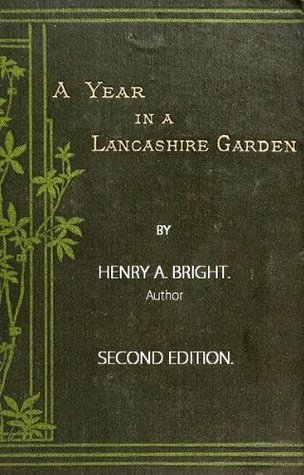Henry Arthur Bright
A Year in a Lancashire Garden
On this day in 1873, the gardener and writer Henry Arthur Bright began a diary, which would become known as the book "A Year in a Lancashire Garden" - one of the most beloved garden biographies of the nineteenth century.
Bright's book would inspire future garden writers like Eleanor Vere Gorden Boyle, Henry Nicholson Ellacombe, Maria Theresa Earle, and Elizabeth Lawrence.
Here are some excerpts from Bright's journal entry for this day in 1873. At the very end, he talks about making a potent tincture with petals from a Madonna Lily:
"These notes are written for those who love gardens as I do... and they are written ... to convey to others some little of the delight, which grows (more certainly than any bud or flower) from the possession and management of a garden.
Lancashire is not the best possible place for a garden, and to be within five miles of a large town is certainly no advantage. We get smoke on one side, and salt breezes on another, and, worst of all, there comes down upon us every now and then a blast, laden with heavy chemical odors, which is more deadly than either smoke or salt. Still, we are tolerably open, and in the country.
These are certainly what the American poet Bryant calls “the melancholy days, the saddest in the year.” The late autumn flowers are over; —the early spring ones are still buried under the soil. I could only find this morning a single blighted monthly Rose, a Wallflower or two, an uneasy-looking Polyanthus, and some yellow Jasmine against the house—and that was all. Two days of early frost had killed the rest.
Lastly, the Chrysanthemums are in flower. The Chrysanthemum has three merits above almost every flower. It comes in the shortest and darkest days; it blooms abundantly in the smoke of the largest cities; it lasts longer than any flower when cut and put into water. If flowers have virtues, the virtue of the Chrysanthemum is its unselfish kindliness.
In the hybrid beds, I shall plant a number of roots of the Lilium candidum—the dear old white Lily of cottage gardens. And as I write I am told of a recipe [using] the firm white petals. You must gather them while still fresh, place them unbroken in a wide-necked bottle, packed closely and firmly together, and then pour in what brandy there is room for. In case of cut or bruise, no remedy is more efficacious and certainly none more simple."
This post was featured onThe Daily Gardener podcast:
helping gardeners find their roots,
one story at a time






